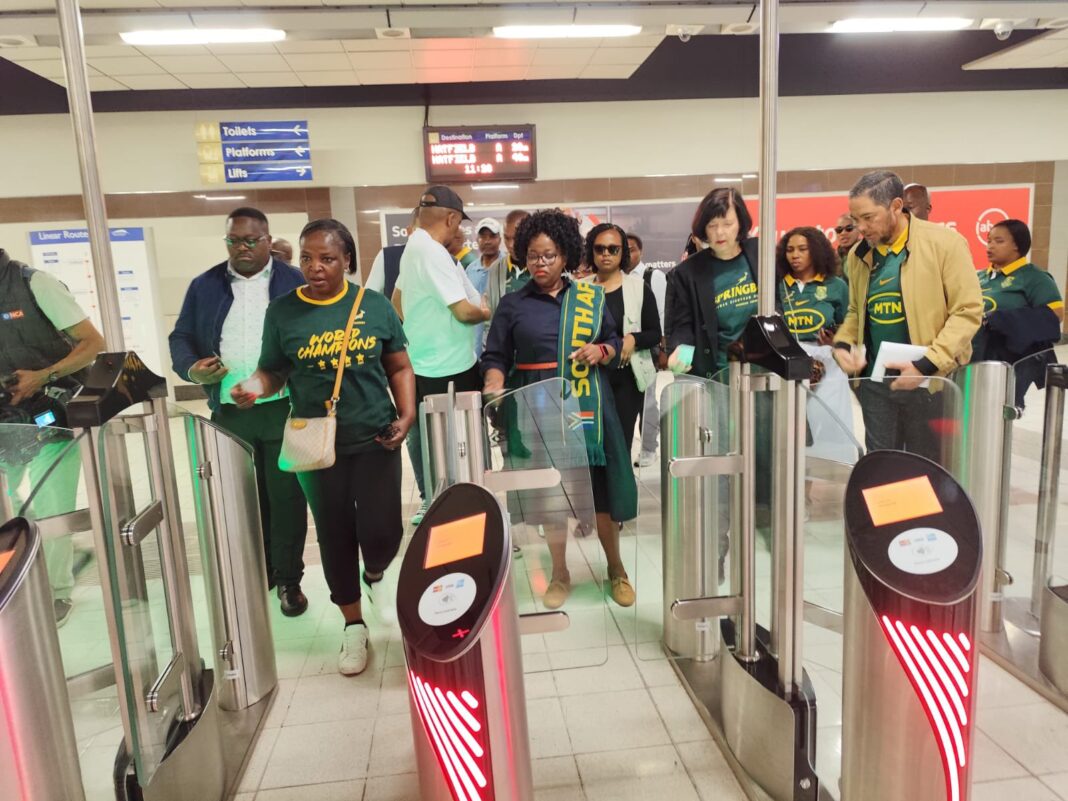By Johnathan Paoli
The Gautrain Management Agency (GMA) is poised to revolutionize its services amid evolving commuter trends, aiming to enhance accessibility, dynamism, and financial viability.
Concurrently, it seeks to redefine Gautrain stations as vibrant hubs for business, retail, and social interactions.
The shift in post-pandemic travel behaviours has diminished the traditional Monday-to-Friday, 9-to-5 commuting pattern.
Remote and hybrid work models have fundamentally reshaped ridership dynamics, necessitating a novel approach to public transport services.
Acknowledging these transformed ridership patterns post-COVID-19, the Gautrain is proactively identifying underserved customer segments and their specific needs. It intends to tailor its offerings to ensure travel becomes more inclusive for a diverse range of passengers.
Gautrain CEO Tshepo Kgobe acknowledged the shift, emphasising the need for continuous adaptation.
“The days of a predictable, fixed commuting schedule are over. Passengers are now demanding frequent service throughout the day and flexible pricing options that align with their hybrid work routines. Additionally, rising costs of living have made affordability a critical factor in transport decisions,” Kgobe said.
Globally, rail operators are responding to these shifts by modifying their operations and expanding service offerings.
The Gautrain recently conducted a brand study revealing that, while the system maintains a reputation for safety, efficiency, and cleanliness, it is still perceived as inaccessible to certain commuter segments.
“This presents an opportunity to innovate and ensure that Gautrain meets the needs of all potential users, including those who previously felt excluded due to cost or location,” Kgobe explained.
A major step in this transformation is the appointment of a new delivery partner, expected to take over in 2026 when the current Gautrain concession agreement expires.
The new Public-Private Partnership model will allow the agency to explore dynamic pricing, fare incentives, and expanded services tailored to a broader customer base.
“Under this new agreement, we will be able to introduce initiatives that promote affordability, enhance service accessibility, and ensure the long-term sustainability of the Gautrain system,” Kgobe noted.
As South Africa’s most densely populated province, Gauteng suffers from chronic traffic congestion, exacerbated by rapid urbanisation.
Efficient public transport remains critical to economic activity, mobility, and environmental sustainability.
Kgobe said the Gautrain expansion plan, which includes extending the rail network to key townships such as Soweto and Mamelodi, is a pivotal solution.
“Extending the network beyond suburban nodes into economic and residential hubs like Soweto and Mamelodi will significantly boost ridership and promote greater inclusivity in public transport,” he said.
Recognising the importance of diversifying revenue streams, the GMA has embarked on a strategy to turn Gautrain stations into multi-use spaces.
The goal is to integrate business, retail, and social amenities within transit hubs, making them not just places of transit but dynamic centers of activity.
“We have already introduced vehicle licensing services at select Gautrain stations, and we plan to expand offerings to include retail, dining, and business services. By transforming Gautrain stations into hubs of commerce and social engagement, we enhance the overall user experience and create additional economic opportunities,” Kgobe said.
Additionally, Gautrain is positioning itself as the transport mode of choice for major social, sports, and entertainment events in Gauteng.
The CEO also noted that with Gauteng being a vibrant province that hosts numerous large-scale events, the executive team is working to ensure that Gautrain becomes the preferred mobility solution for eventgoers, making travel seamless, convenient and enjoyable.
As Gautrain prepares for the future, he said Gautrain’s commitment to adaptability and customer-centric innovations underscores its role as a key player in shaping the province’s transportation landscape.
INSIDE METROS

